June 12th, 2009
I wanted to get this update in sooner, but as life would have it, that didn't happen. I wanted to include the last part of this update in the next one, since I might be tearing out some benchwork. I had under estimated a very important thing when I was building the benchwork 2 years ago. But we'll get to that.
Anyhow, back on the upper level.... I finished wiring up "main block 3" which is the detection block for the main line from the south June Lake siding turnout around the peninsula and through the town of Bridgeport to the north Sonora Siding turnout. I also ran a 12 volt power line for the detection controllers and a 6 volt power line for the Tortoise switch machines around half of the upper level. I'm using an old computer power supply for the power. I don't like my Tort's getting a full 12 volts, and to drop this I'd have to put resistors on all of them. Well, the computer power supply has the 6 volt power outputs on it, and I like the speed at which the Tort's move with that much power. So less stuff I have to buy and install. =)
Along with the power lines, I have also ran the detection LED lines to the junction board under the town of Mammoth. From there, they'll go into the laundry room to the dispatch desk. So for now, I have the LED's in place at the junction board to make sure the detection blocks are working after I wire them up.
I also ran the power wires for both north and south June Lake siding's Tort's. The turnouts will be controlled both at the layout's edge and at the dispatch board. Wiring for this situation wasn't hard to do, but it did facilitate the use of 2 power supplies, and a lock out switch that will be installed in the dispatch panel. The lockout will control who gets to operate the turnout, dispatch or local. All main line turnouts will be connected like this, as this will prevent an operater from throwing a turnout that the dispatcher did not want thrown. This will also work great for when I'm by myself running trains, as I'll be able to flip all the lockout switches for local and have total control of all switch machines in the layout room.
Now, getting back to that under estimated part... yeah, so the siding at Mammoth, which starts right after the Owens River Gorge trestle and ends just before the helix, is too short. I had estimated that it would be short, but not as short as it has come to be. I lost consiterable space at the turnouts, as there needs to be more space to get the train in the clear than previously thought. =(
At first, I thought well, ok, no big deal, I can just have the longer trains hold up on top at June Lake. Well, most trains on the layout will be longer than what can fit in this siding (which at the moment is 3 locos and 25 cars). That will become a bottleneck on the layout and give the dispatcher problems. Besides, who wants to sit in the siding while they wait (and wait and wait) for a train coming up the lower level and helix? So I have come up with 2 solutions. Both have their drawbacks. One is to move the 180° curve back towards the backdrop, which will severly cut down on the switching I was going to put at Mammoth. The other is to move the Owens River Gorge trestle back down the main line 14". That would involve redoing the lowered benchwork and backdrop in that area. The 3rd option would be to just leave it as is, and see what happens when operations start. If it becomes a nightmare, then I'd be tearing up the track as well as what's there now. So I'll be contemplating this while I work to get the other siding (Sonora) finished on the upper level. Anyhow, here's a few pictures.
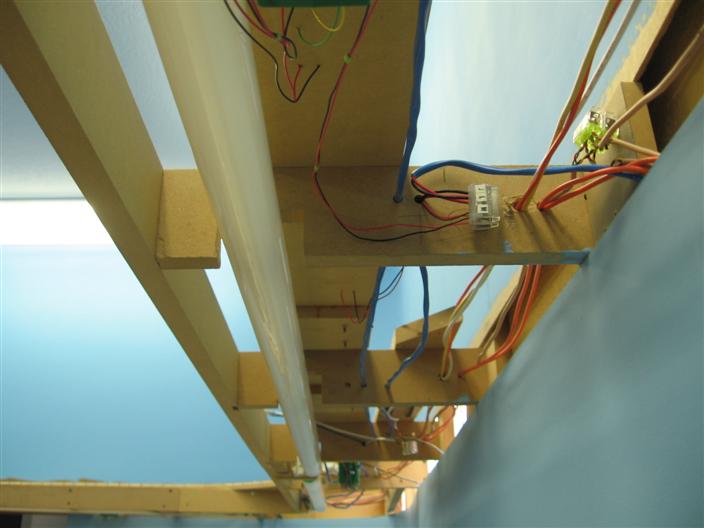
Wiring for the upper level above the yard.
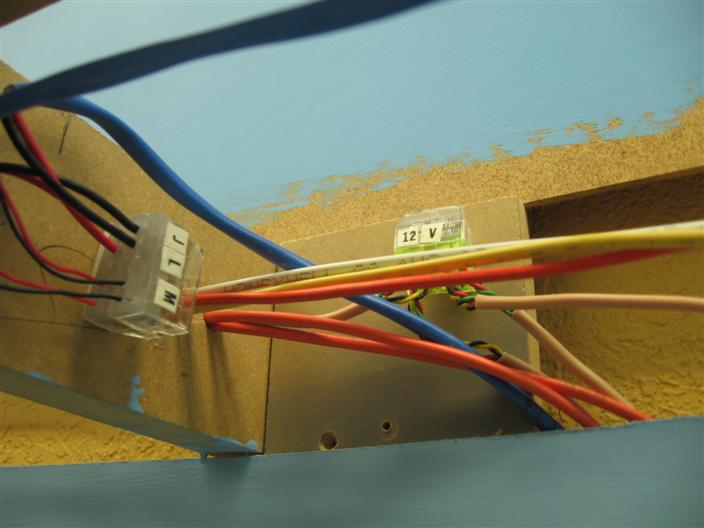
I mark all my connectors so I won't have to remember down the road what went where. In this view is:
Blue w/ red and black: DCC
Orange: Detection LEDs
Yellow: Lockout power control
White: 6V power
Light Brown: 12V power.
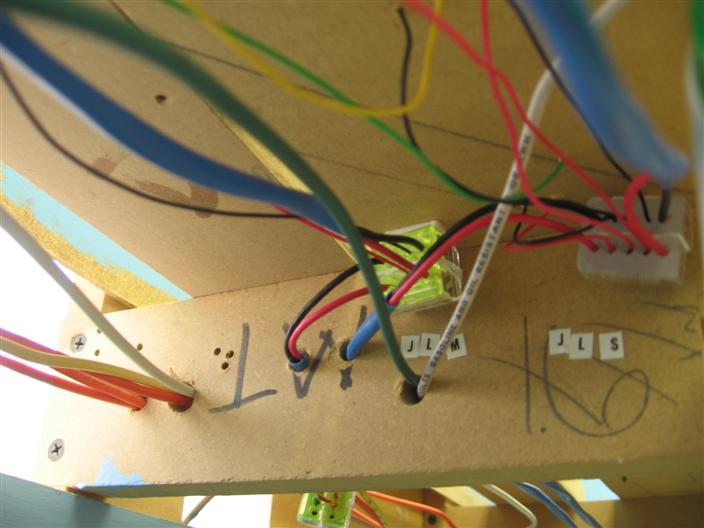
Another view. June Lake Main and June Lake Siding buss wires.
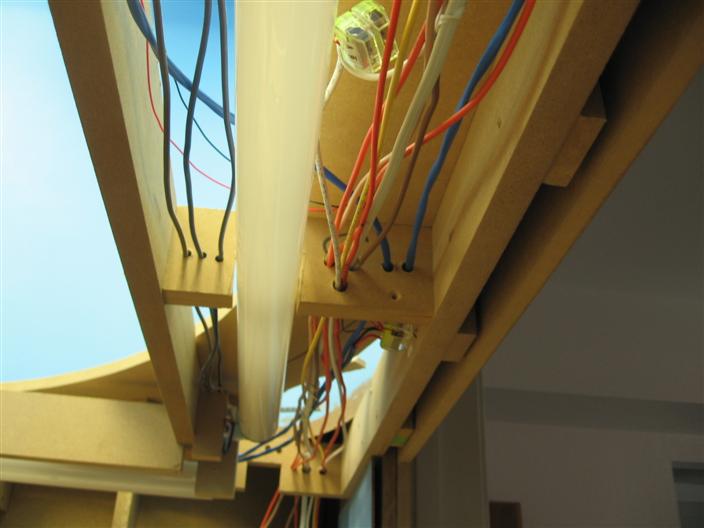
Here we are at the room entrance. All the wires on the yard side of the room have to pass through this area of the benchwork to get to the dispatch panel. This is just the wires for the upper level! I still need to run all the wires for the lower level!
Here is the wiring diagram for the toggle switches and lockout switch
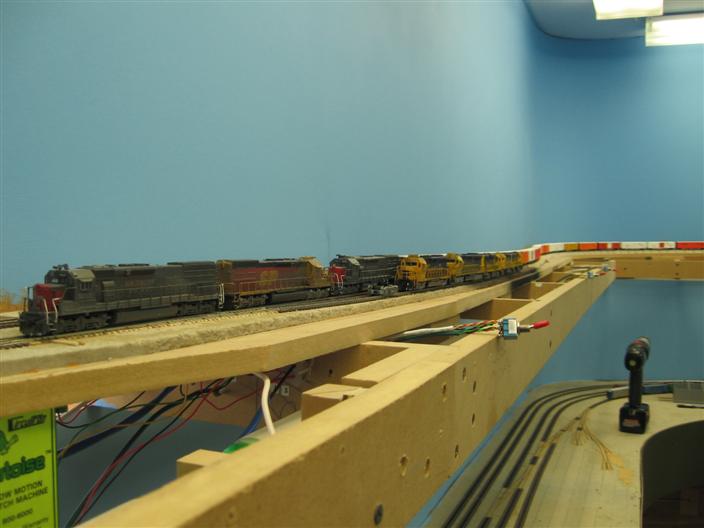
I have the toggle switches wired in and operating. No more reaching under the layout to manually move the Tortoise!
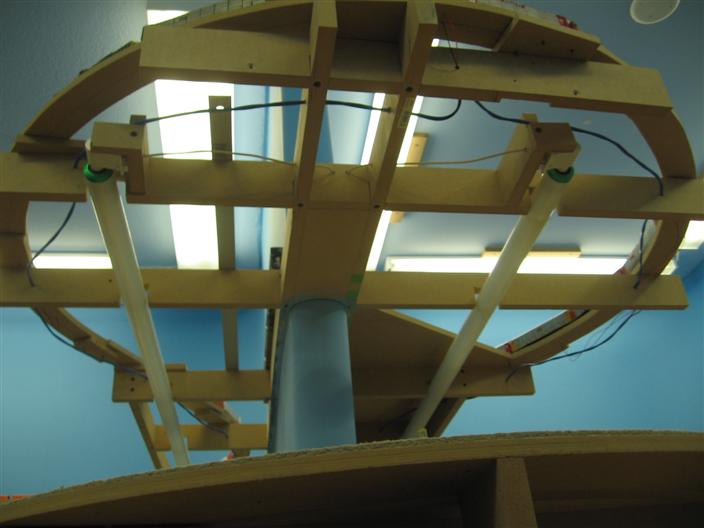
Upper level at the end of the peninsula. The blue wire is the DCC buss line.
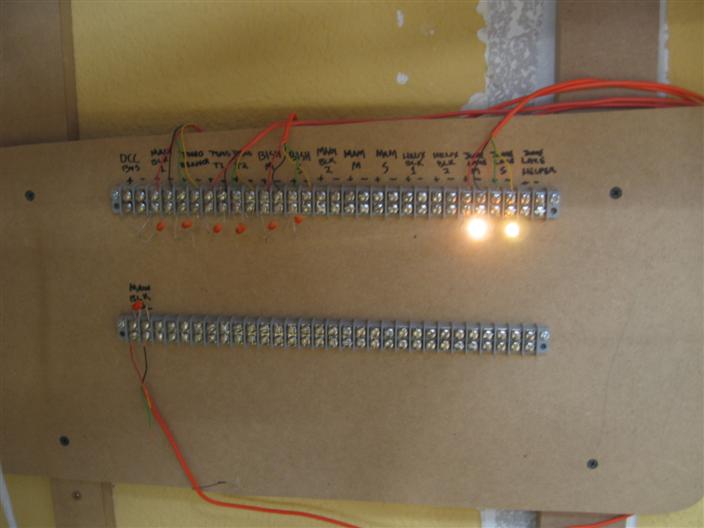
This is the junction panel located under Mammoth. I have the detection LED's temporarily hooked up. Apparently there is a train on both the June Lake siding and main.
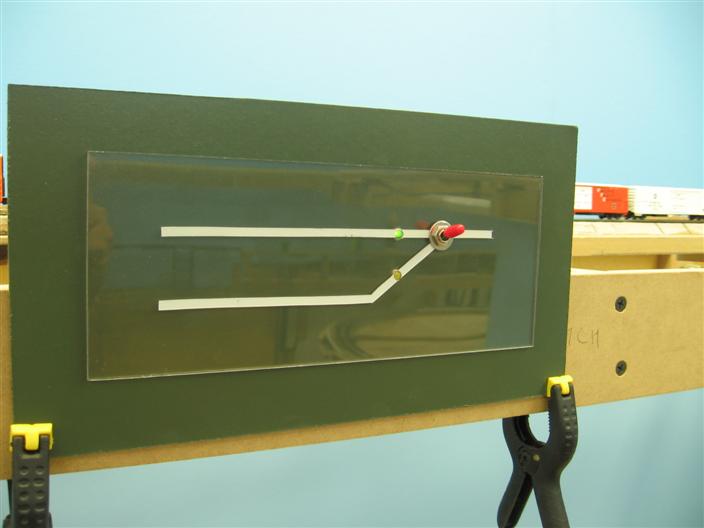
Mock up of a control point. At first I was going to use a green and yellow LED, but now I think I'm going to skip it and just have the toggle switch.
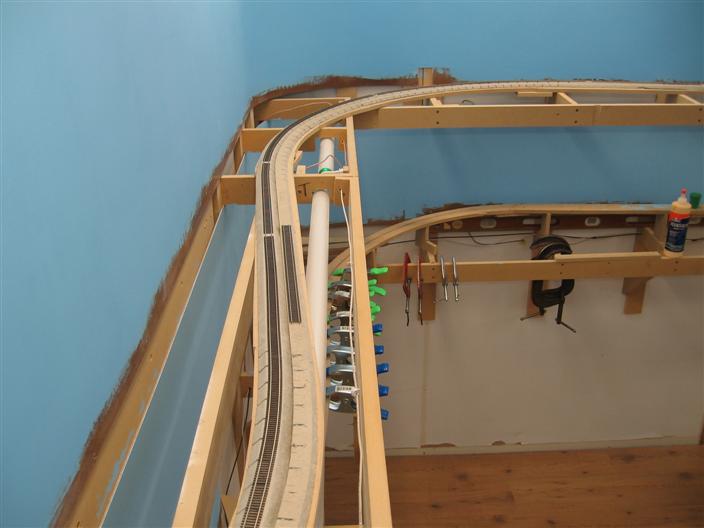
Got the homasote installed here for the Sonora siding.
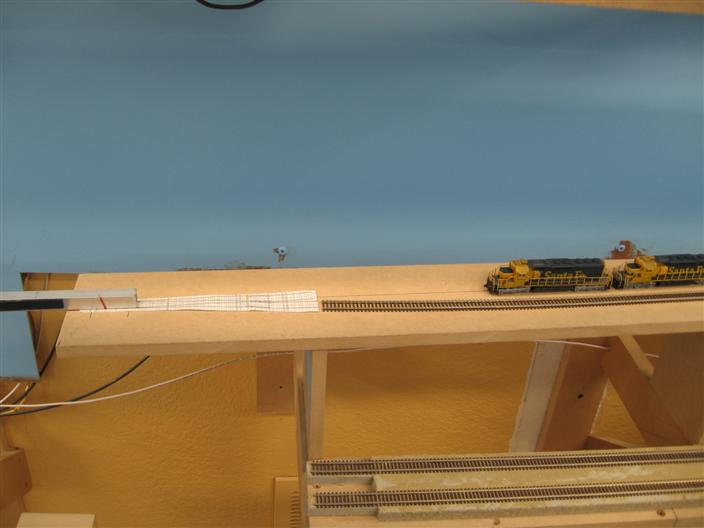
This is the original location of the south end of Mammoth siding. The turnout is to start right after the trestle. This is where I underestimated the lenght of train that will fit.
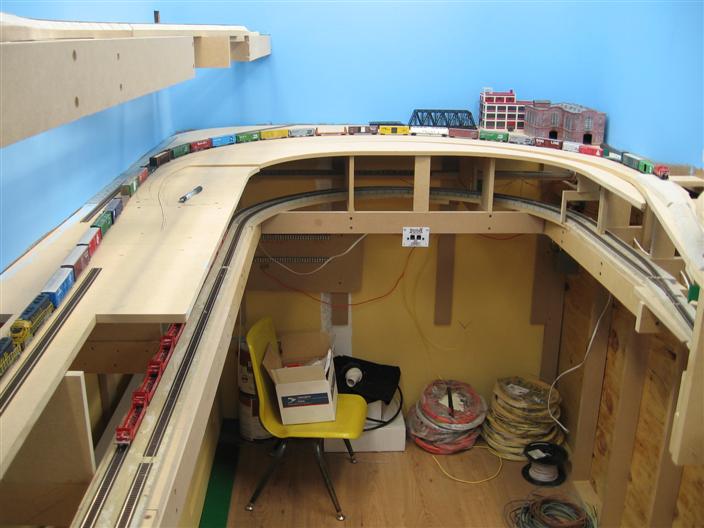
This is a 30 car train with 3 locomotives. The engine and caboose are barely in the clear. This also has the cars sitting on the realignment. Even though this train fits, the area for switching here at Mammoth is greatly reduced.
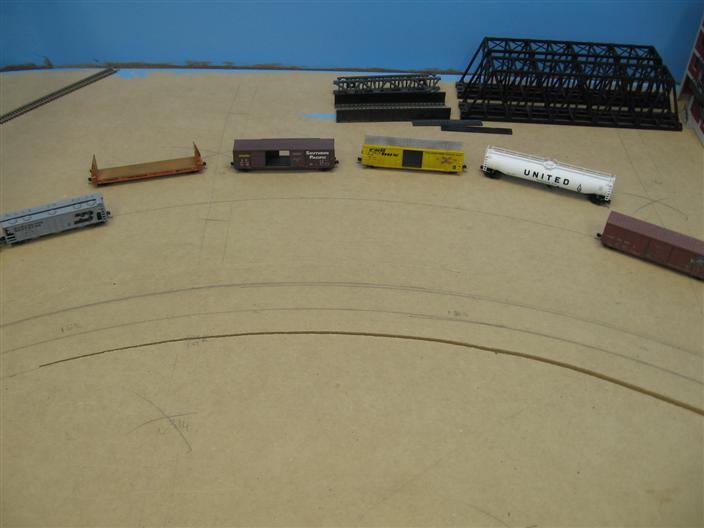
Here is the new alignment. It sits 4" further back than the original alignment. With it further back, it really eats into the space I had set aside for switching. I'm not sure if I'll go this route or move the trestle back down the main to get the siding longer.
Next update perhaps....
All material on The Owens Valley Subdivision website is Copyright 2007-2009 by Michael Stoner. None of the material (including text and photographs) on this web site may be reproduced in any form without prior written permission.